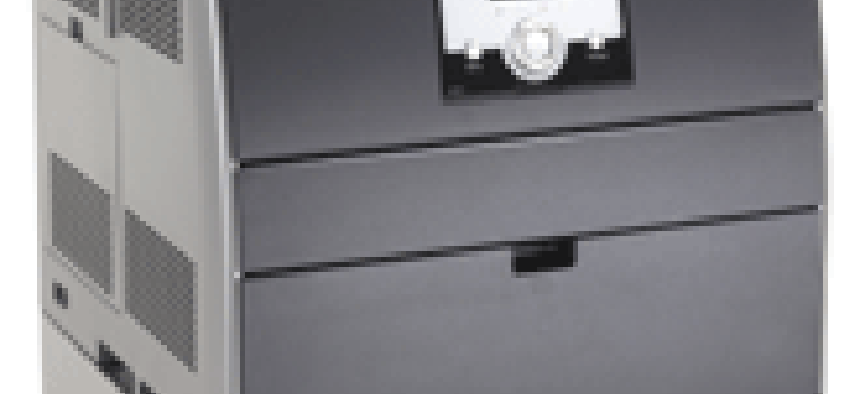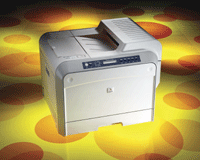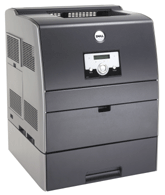Whether you're the only one in your department cranking out volumes of documents, or you share a printer with a small group, it's time to take a serious look at color laser printers.Although you can pay thousands for a color laser, there are plenty for between $300 and $1,000. At those prices, you could buy a color laser as a personal printer for your busiest workers, even though you're still more likely to spread the cost out over several users. But these days that cost-efficient workgroup can be smaller than ever.More important, low price doesn't equate with low quality. My search for color lasers under $1,000 found 22 models from 13 vendors. Ex- perts say low-cost lasers produce text as well as leading monochrome printers, and many are capable of good-to-excellent color graphics. Sure, the more you spend the more likely you are to see top-of-the-line results. But today's budget lasers can surprise. In March, the GCN Lab was blown away by the output quality of the $550 Brother HL-2700CN.As for photos, unless you're looking for gallery quality, you'll be perfectly happy with most of the models listed here.The fact is, color printing at the office is becoming the realm of laser printers. While you may pay more up front for a color laser than an office-caliber ink-jet (HP's Color Inkjet cp1700 series, for example, starts at $500), its per-page printing costs'especially for color'will be less. That's because ink is expensive and can run out fast. HP touts a maximum monthly volume of just 5,000 pages for its cp1700 ink-jet, but 30,000 pages for the $600 entry-level LaserJet 2550Ln.Per-page pricing information from vendors tends to be biased, but a little math shows that color pages printed by lasers in this guide cost about 12 cents, while black and white pages generally run under two cents. In addition, laser printers' speed (particularly one-pass models) and easy networkability help reduce total cost of ownership.If you print in reasonably high volume over three years (the typical life span of a desktop or small office printer), you'll probably spend less on an entry-level color laser than an ink-jet. In any event, keep TCO in mind when shopping for a laser printer. Among the factors that determine TCO are:Toner. Color laser toner varies greatly in price, costing as little as $10 per cartridge for a small personal laser or as much as $300 for a networked printer. Plunking down $50 for a color toner cartridge may seem high, but keep in mind that its yield may also be high. For example, a $50 cartridge that serves up 5,000 pages equals one cent per page for toner.Although you'll see ads for third-party toner refills at half the price of a vendor's recommended supplies, be wary of unknown materials that may gunk up your printer rollers.Paper. By now, even the least experienced user knows the better the paper quality, the better the printouts. While I've had some success buying coated paper stock from third-party manufacturers (Kodak, for example), it's generally best to buy the manufacturer's recommended proprietary paper stock, even though it often costs more. Look to purchase in bulk from office product outlets such as Staples, Costco or OfficeMax.Maintenance. Printer downtime and repairs can dramatically affect TCO. If you know your printing demands are going to be heavy, it's a good idea to invest in a maintenance contract or on-site service program.Extras. If you want an internal network card, duplexing unit or large-capacity input trays, remember such items don't usually come standard on an entry-level printer. They can add hundreds of dollars to the bottom line, so you may be better off getting them standard with a slightly higher priced model.Although the cost of printing may be the most important factor, it's by no means the only criterion. There are two main varieties of color laser printers: four pass and one pass. Four-pass technology employs four cartridges for the three primary colors (cyan, yellow and magenta) plus black. These cartridges are mounted on a carousel, and each color is applied to the paper in turn.One-pass laser technology uses four lasers and four organic photoconductor drums, allowing it to apply all four toner colors simultaneously.Since a four-pass color laser must make four passes, it takes about four times as long to print a color page as a one-pass unit.What else can you expect from an entry-level color laser?Speed. A printer's speed, how many pages per minute it churns out, is typically the specification buyers rely on most, but it's also the least dependable. Unless you run your own test or trust results from an independent source such as the GCN Lab, you'll have to rely on the manufacturer's word.[IMGCAP(2)]Unfortunately, some manufacturers test speed using simple text documents at draft mode setting, giving a greatly distorted picture of how fast their printer works. Dependable third-party test tools, such as those from QualityLogic (), can help determine a printer's actual speed under a variety of conditions.Resolution. Resolution is another specification subject to manufacturer interpretations. Resolution refers to the maximum number of dots that can be printed per square inch.The higher the resolution, the more crisp, clear and detailed the printout. Some manufacturers, however, inflate the numbers for marketing purposes. In other, legitimate cases, manufacturers have developed proprietary resolution enhancement technologies, such as Hewlett-Packard's HP ImageREt 2400, which significantly improve edges on both text and graphical renderings.In any case, 600- by 600-dpi resolution is adequate for virtually all work your color laser will perform.Connectivity. The Universal Serial Bus 2.0 port has become the de facto connectivity standard for desktop printers, and all units listed have one. Fast, bidirectional parallel ports come with a few units.You'll also want some type of Ethernet connectivity to network your printer. Surprisingly, wireless 802.11b/g and Bluetooth connectivity don't show up in many entry-level lasers, at least in the $300 to $1,000 price range.Processor and memory. Even the least expensive color laser in our guide, the Konica-Minolta's Magicolor 2300DL, comes with a decent processor (the 200MHz PowerPC 405) and enough upgradable memory (from 32M TO 288M) to enable it to line up multiple large files, including high-resolution photographs, for smooth processing without significant delay. As a rule of thumb, the bigger the workgroup using the printer, and the more complex the pages you print, the more powerful the printer you'll need. The Xerox Phaser 8400/B, for example, comes with a 500MHz processor and 128M to 512M of RAM, making it a good model for larger groups.Keep in mind, not all of these printer are memory upgradable. The HP Color LaserJet 3550, for instance, is not.Paper handling. Entry-level color lasers are designed to handle standard paper sizes, such as letter and legal paper, as well as large and small envelopes. They also take plain paper, glossy paper and transparencies. Most of the printers here will handle from 200 to 500 sheets of standard letter-sized paper with optional input/output trays for extra loads. Advanced features, such as tabloid-sized printing and auto-document feeding, require more expensive lasers, but you can add auto-duplexing (automatically printing both sides of the paper) to many of the printers in our guide.OS and printer language support. The printers listed here come with drivers for most popular operating systems, such as Windows, Mac OS and Linux, and for standard printer languages such as PCL 6 Emulation, PCL 5c, Epson FX, HP-GL, PostScript 3 Emulation, and PDF 1.2, and 1.3.Monthly duty cycle. While it isn't fair to expect duty cycles in the hundreds of thousands of pages per month from entry-level color lasers, the units listed here are surprisingly robust, ranging from about 35,000 to 70,000 pages per month. Since an office laser must tackle everything from occasional letters, to spreadsheets, to high-end graphics, a duty cycle of at least 35,000 is a must for trouble-free service.








